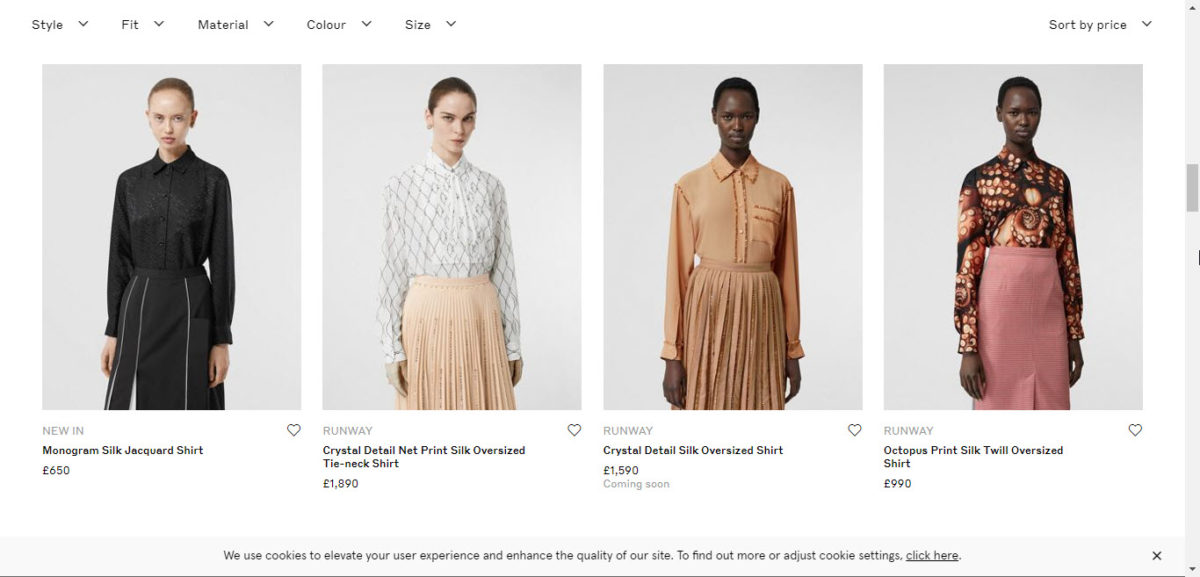Want more sales? Here are five scientifically proven psychological tricks to get customers to spend more money in your store.
Watch the video below:
Most of assume that we buy products and services because we want to. Well, science proves otherwise!
Every day, stores are secretly tricking us into buying things. And science has found that these tricks have a psychological effect on the subconscious mind, massively influencing what we buy and why we buy it.
In this article, we are going to reveal five proven mind tricks that stores are using on you every day. And how you can use them to your advantage by applying these exact same methods to your own store.
Some of these tricks are used to get new customers, while some work by getting customers to spend more money.
The best part is, these tricks can be used immediately to increase your sales, boost your conversion rates, or simply win over more customers.
Whether you own a dropshipping store, or any other online business that involves selling a product or service, these tricks are universal and proven to work (as you’ll soon learn in this article).
Trick #1: They Price One Product Absurdly High, and Expect No One to Buy it
At a restaurant, a wine menu usually has one fancy bottle priced absurdly high compared to the others.
Sometimes that bottle is even ten times the cost of the next expensive bottle on the list. “Who would buy that?” you might ask. And you’re absolutely right: Nobody!
So why is the bottle on the menu? The truth is no one is actually buying the wine. It’s just there for show… And to trick you into paying higher prices for their other bottles of wine.
This is called price anchoring. It’s a sneaky trick that menu engineers use, and has a powerful influence on your purchasing decision.
Research led by Drazen Prelec, a professor at MIT, illustrates just how powerful this trick can be…
For example, one of his experiments was a mock auction held to a group of 55 MIT students. In the auction, he pitched five different items:
- A fancy a bottle of wine
- Another fancy bottle of wine
- A cordless keyboard and mouse
- A pound of Belgian chocolate
- And a design book
After pitching each item, the researcher hand each student a piece of paper. They were instructed to write the last two digits of their social security number at the top of the page. Then write those same two-digit numbers next to each item for sale, in the form of a price.
Next to each price, they were asked to write either yes or no as to whether they would be willing to pay that price for each item. And then write the maximum price they would pay.

Students were shocked to discover that their social security numbers had influenced their maximum bid price.
Students with lower security numbers, ending in the upper 20%, placed bids between 216% to 346% higher than students whose social security numbers ended in the lower twenty percent.
Without even realizing it, students with high social security numbers had been using it as a price anchor for figuring out what price they would be willing to pay. And the same goes for real life. Before deciding how much to pay for something, most people look rely on other prices to come to up with an answer.
Apply this trick to your store by adding premium priced products to your store, even if you don’t expect people to buy them. This makes your other products appear cheaper in comparison, so people are more likely to perceive lower priced items as a ‘bargain.’
This is just one of the many psychological triggers to get people to spend more money.
Trick #2: They Give New Customers Coupons to Trick Them Into Being Happy
Nowadays, people are getting smarter and sceptical about advertisements.
A survey by Nielson’s Global Trust in Advertising report asked 28,000 people what form of advertising they trusted.
A whopping 92% said friends and family recommendations… while only 36% said online video ads.
This creates a ‘chicken and egg’ situation for stores. Because in order to bring new customers in, a business needs reviews…
…But to get those reviews, they need customers to come in first!
So how do stores overcome this challenge? Coupons!
Not only do they help customers overcome their initial scepticism, but science has shown that coupons can trick us into feeling happy, by affecting the chemical balance in our brain.
In 2012, a study by Dr. Paul J Zack looked at how coupons affect our happiness, stress and health. He split the test subjects into two groups. Group A who was given a $10 discount, and group B who did not.

The results? Group A experienced a 38% rise in oxytocin levels, and rated themselves 11% happier than group B.
But that’s not all… As a result of being given a coupon, Group A’s respiration levels dropped by 32%, while their heart rate decreased by 5%!
Overall, coupons made them feel more relaxed and less stressed. And carried them from a state of doubt and scepticism, to a place of ease and happiness.
So how can you implement this? The answer is simple. Create a 1-off coupon code, then add a popup to your store that offers it to new customers (in exchange for their email address). One of the most effective apps that dropshipping stores use to do this is the Spin-To-Win app.
Trick #3: Give Away Free Products with a Buy-1-Get-1-Free Offer
This a proven trick to get customers win over more customers.
In 1886, John Pemberton, founder of Coca-Cola, wanted to boost the soda companies fledgling sales.
And so Frank Robertson, John’s bookkeeper, came up with a genius idea. The idea was to give away thousands of free vouchers to potential customers that entitled them to a free bottle of Coca-Cola.
And it worked!
They kept this promotion going for years, and between 1894 and 1913, an estimated 1 of 9 Americans had received a free Coca-Cola.
But not only does this strategy show the power of coupons… It also showed the incredible power of the word ‘free.’
Everybody loves free things, but why is that so? Well, it turns out that when we get something for free, we actually value it MORE than if we paid for it.
So, how can you implement this in YOUR store?
One effective way is to create your own ‘Buy One, Get One Free’ coupons, and test them against discount coupons to see if it’s more effective than a normal discount. As mentioned above, Spin To Win is one of many Shopify apps that allow you to test this in your dropshipping store.

Inside the settings, you can set it so that 50% of your customers win a discount coupon, and 50% win a free item coupon. Then you can see which one turns out to be the most effective.
Trick #4: They Trick You With Volume Bonuses to Think You’re Getting a Better Deal
So we know that the word free works so because people tend to value it more.
But another reason why is because most of us are quite easily tricked into being really bad at math.
In one study, a researcher took a group of undergraduates and gave them two offers. Offer A was a bag of coffee beans with a 33% discount. And offer B was a bag of coffee beans with 33% extra beans.

As a whole, students saw both offers as an equally great deal, even though offer A was the better deal.
How? Let’s do the math. Let’s say that a 100g bag of coffee beans normally cost $10. We apply a 33% discount, so it now costs $6.70. That means that each gram of coffee beans now costs just 6.7 cents.
Now let’s take that same original bag of coffee beans, but this time bump up its volume by 33%, so now it costs $10 for 133g of beans. When you do the math, a gram of beans will now cost 7.5 cents.
Because the same number is applied to both offers, your brain assumes that a 33% increase or decrease is the same thing. In fact, you probably thought it was at first!
It’s kind of like the Poggendorff illusion. The black line looks as if it matches up with the blue one, but when the block is removed, you realise it is connected to the red one!

It’s things like this that are easy to trick people into thinking they are getting a better, when really they aren’t.
Trick #5: They Use Prestige Pricing Instead of Decimal Pricing
Here’s a question for you… In the picture below, there is something rather strange about this clothing store compared to others. Can you guess what this is?

The strange thing about this store is that, unlike the majority of retail stores, they don’t use decimal pricing. Instead, they use whole numbers.
This style of pricing is common with designer brands such as Burberry, Gucci and Prada. And the reason is because people who buy from them do it out of feeling and, rather than strategic choice.
And the 2014 study, This Number Just Feels Right, can explain why. When we see a decimal price, such as $489.99, our brain struggles to process that number quickly. And so to compensate, our brains tap into ‘cognition mode’ to logically evaluate it (often poorly).
Because we don’t process these numbers well, most of us are tricked into thinking these prices are cheaper than they really are.
On the other hand, a rounded number like $490 is easy for our brains to process and understand. And because we aren’t trying to evaluate it, our feelings and emotions come to the forefront of our decision making.
Designer clothing stores know they won’t people over by tricking them with decimal pricing There’s absolutely no way of hiding a shirt that costs $5,000!
The smarter strategy would be to disclose the price, since they know that feeling and emotion is the real reason why people buy their clothing.
Keep in mind though that this type of pricing works best with other high-end stores, and less so for small dropshipping stores. And so we recommend you NOT to use this strategy, and stick to decimal pricing instead.
The Bottom Line
There’s several ways our brain is tricked into spending more than we should.
Now you are aware of a few tricks, you can use them to your advantage by implementing them in your own store.
Even using one trick alone can drastically boost your sales and conversion rates. Whether it is a coupon or discount, or pricing a few items absurdly high, these methods are proven to largely impact people’s purchasing decision. And they don’t cost you a single penny!

